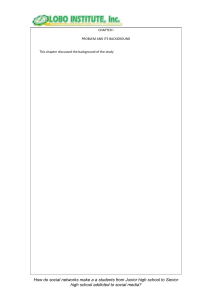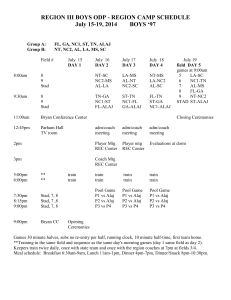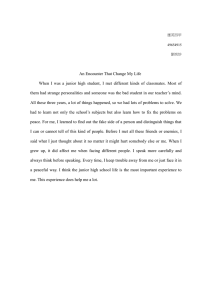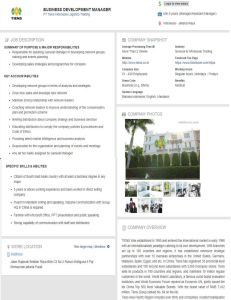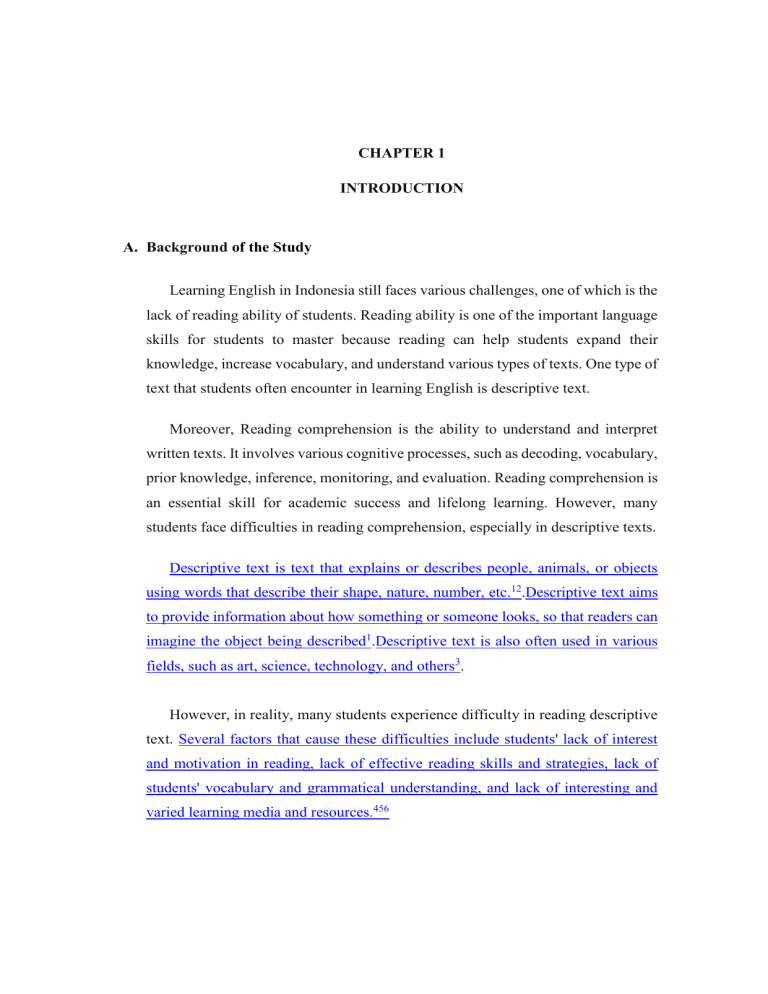
CHAPTER 1 INTRODUCTION A. Background of the Study Learning English in Indonesia still faces various challenges, one of which is the lack of reading ability of students. Reading ability is one of the important language skills for students to master because reading can help students expand their knowledge, increase vocabulary, and understand various types of texts. One type of text that students often encounter in learning English is descriptive text. Moreover, Reading comprehension is the ability to understand and interpret written texts. It involves various cognitive processes, such as decoding, vocabulary, prior knowledge, inference, monitoring, and evaluation. Reading comprehension is an essential skill for academic success and lifelong learning. However, many students face difficulties in reading comprehension, especially in descriptive texts. Descriptive text is text that explains or describes people, animals, or objects using words that describe their shape, nature, number, etc.12.Descriptive text aims to provide information about how something or someone looks, so that readers can imagine the object being described1.Descriptive text is also often used in various fields, such as art, science, technology, and others3. However, in reality, many students experience difficulty in reading descriptive text. Several factors that cause these difficulties include students' lack of interest and motivation in reading, lack of effective reading skills and strategies, lack of students' vocabulary and grammatical understanding, and lack of interesting and varied learning media and resources.456 Information and communications technology (ICT) has developed rapidly in recent decades. ICT provides various conveniences and benefits in various fields, including education. One ICT product that can be used in education is Augmented Reality (AR).AR is a technology that combines virtual objects with real objects in one space and time, thereby creating new experiences for users1. AR can be used as an interesting, interactive and innovative learning medium.Augmented Reality (AR) can provide a more real, interesting and fun learning experience for students8.Augmented Reality (AR) can also increase student engagement and interaction with the text they read9. Apart from learning media, learning methods also influence improving student learning outcomes.One learning model that can be combined with AR is Student Teams Achievement Division (STAD).STAD is a cooperative learning model that groups students in heterogeneous teams consisting of four or five members with different abilities, gender and backgrounds.2.STAD consists of four stages, namely class presentations, learning teams, individual quizzes, and team awards10. STAD can improve student learning achievement by providing opportunities for students to help each other, discuss and be responsible for their team's learning results. In STAD, students study together in teams to help other team members understand the lesson material.STAD can increase student motivation, cooperation and learning achievement3. One of the lesson materials that can be taught using AR and STAD is Description Text. Description Text is one type of text that must be mastered by junior high school students according to the 2013 curriculum5. The ability to read Description Text is important for junior high school students because it can help them understand information about various objects around them. In the context of English learning, especially in understanding descriptive text, the use of AR together with the STAD Learning Model has great potential to improve students' reading abilities. This study will examine the effect of using Augmented Reality and the STAD Learning Model on improving the ability to read description text of private junior high school students in South Tangerang City. Based on the background above, researchers are interested in conducting research entitled "The effect of using AR and STAD on improving the ability to read Description Text (A Survey Study of Junior High School in South Tangerang City)." B. Identification of problems Based on the background of the problem, varied questions have emerged and can be identified as follows: 1. What problems do teachers face when teaching reading skills as a language component in junior high schools in South Tangerang City? 2. What problems do students face when understanding reading descriptive texts at junior high schools in South Tangerang City? 3. What strategies do students use to improve their descriptive text reading skills at junior high schools in South Tangerang City? 4. Is there an influence of the use of Augmented Reality media on descriptive text reading skills in junior high schools in South Tangerang City? 5. What situations do not support students at junior high schools in South Tangerang City to understand reading descriptive texts? 6. What is the cause of the low ability to read descriptive text of students at junior high schools in South Tangerang City? 7. Do students at junior high schools in South Tangerang City think that understanding reading descriptive texts is a difficult subject to learn? 8. Is there an influence of using the STAD method on students' descriptive text reading skills at junior high schools in South Tangerang City? 9. How do teachers at junior high schools in South Tangerang City improve students' descriptive text reading skills? 10. Is there an influence of the use of Augmented Reality and the STAD method on descriptive text reading skills in junior high schools in South Tangerang City? C. Limitation of The Problem Based on the identification of the problem above, the researcher limits the research problem as follows: 1. This research only tests the effect of using AR and STAD on improving the ability of reading skill for Description Text in 8th Grade students at Junior High Schools in South Tangerang City for the 2023/2024 academic year. 2. This research only uses one type of AR, namely marker-based AR which requires special markers or signs to display virtual objects. 3. This research only uses one type of STAD, namely STAD type 2 which involves individual tests and team tests as part of the learning process. 4. This research only uses one type of Description Text, namely Description Text about animals. D. Research Question Based on the background and limitation of the problem, the researcher intends to explore this study described in the following questions: 1. What is the effect of using AR on improving the ability of reading skill for Description Text at 8th Grade students at Junior High Schools in South Tangerang City for the 2023/2024 academic year? 2. What is the effect of using STAD on improving the ability of reading skill for Description Text in 8th Grade students at Junior High Schools in Soutth Tangerang City for the 2023/2024 academic year? 3. What is the influence of the interaction between AR and STAD on improving the ability of reading skill for Description Text in 8th Grade students at Junior High Schools in South Tangerang City in the 2023/2024 academic year? E. The Objectives of the Research Based on the problem formulation, the objectives of this research are: 1. To determine the effect of using AR on improving the ability of reading skill for Description Text in 8th Grade students at Junior High Schools in South Tangerang City for the 2023/2024 academic year. 2. To determine the effect of using STAD on improving the ability of reading skill for Description Text in 8th Grade students at Junior High Schools in South Tangerang City for the 2023/2024 academic year. 3. To determine the effect of interaction between AR and STAD on improving the ability of reading skill for Description Text in 8th Grade students at Junior High Schools in South Tangerang City for the 2023/2024 academic year. F. The Significances of the Research The results of the study are expected to give the significances go to: 1. For teachers, this research can provide information and inspiration about the use of AR and STAD as interesting, interactive and innovative learning media and models in teaching Description Text. 2. For students, this research can provide opportunities and learning experiences that are fun, meaningful, and have a positive impact on improving their ability to read Description Text. 3. For schools, this research can provide input and suggestions about the importance of developing and facilitating the use of ICT, especially AR, in the learning process at school. 4. For researchers, this research can provide contributions and references for further research related to the same or similar topics. G. The Organization of The Writing The thesis is written by using systematic organization which make reader easily understand. This thesis is derived into five chapters and each chapter consists of several parts, as follows: CHAPTER I INTRODUCTION This chapter contains background, problem identification, problem limitations, problem formulation, research objectives, research uses, and writing systematics. CHAPTER II LITERATURE REVIEW This chapter contains a literature review of AR, STAD, Description Text, and the relationship between the three. This chapter also contains the theoretical framework and research hypotheses. CHAPTER III RESEARCH METHODS This chapter contains research design, research population and samples, research variables and indicators, research instruments, data collection techniques, data analysis techniques, as well as statistical assumptions and limitations. CHAPTER IV RESEARCH RESULTS AND DISCUSSION This chapter contains the results of data analysis, hypothesis testing, and discussion of research findings. CHAPTER V CONCLUSIONS AND SUGGESTIONS This chapter contains conclusions that summarize the research results and suggestions aimed at parties related to the research. BIBLIOGRAPHY This section contains a list of references used in writing a thesis. ATTACHMENT This section contains attachments that support research implementation and reports
